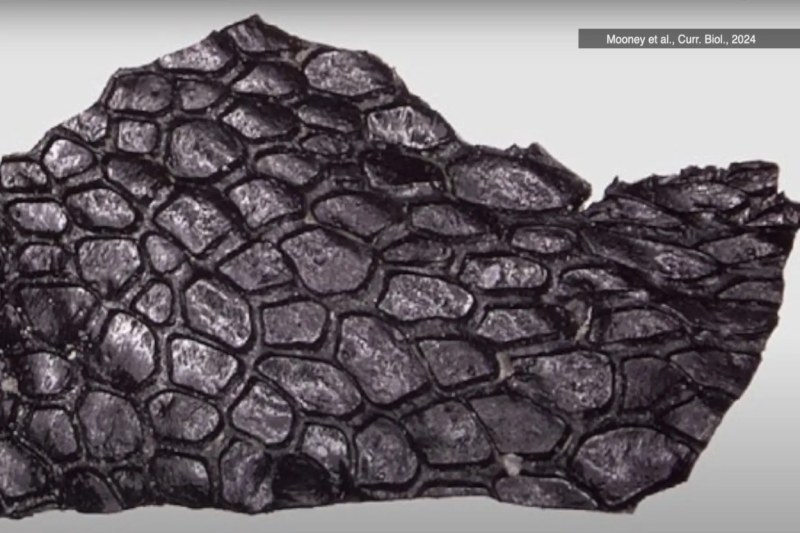The earliest fossilized reptile skin ever discovered has been recognized and characterized, according to paleontologists.
In an Oklahoman cave, a group of paleontologists from the University of Toronto Mississauga found the petrified skin of an animal resembling a reptile. According to estimates, the skin fossil predates the previous record-holder by over 20 million years.
Remaining at least 286 million years old, the discovery was made in the Richards Spur cave system, a remarkable region of Oklahoma that is especially well-suited to preserve fossilized remnants.
Due to a confluence of unplanned circumstances, the soft tissue fossil is an uncommon discovery. It sheds light on an ancient evolutionary history that existed before mammals and the earliest dinosaurs.
Lead study author Ethan Mooney, a paleontology master’s student at the University of Toronto (U of T), claims that low oxygen levels and fine sediment deposition in caves assist postpone decomposition.
Some of the most varied and well-preserved Paleozoic fossils in the world can be found in the limestone caverns of Richards Spur, Oklahoma. The fossils were saturated and further shielded from decomposition at that time by the petroleum and tar from the surrounding Woodford Shale that filled the caverns.
Numerous fossils of the iguana-sized, lizard-like Captorhinus aguti reptile may be found in Richards Spur. The majority of the specimens are skeletons, but one fossilized C. aguti, which was studied in Current Biology, has parts of its epidermis—the scaly outermost layer of skin composed of the same keratin that is present in human hair and fingernails—retained. For surviving on land, Mooney stresses the significance of growing a thick, waterproof skin.
A sequence of tiny particles that U of T biologist Tea Maho mistaken for bone pieces as thin as a human hair and smaller than a fingernail were found by the researchers when examining these fossils.
Nevertheless, microscopic analysis showed that the skin fragment was remarkably well-preserved. The 3D fossil has a thick epidermis with distinct bands of folded scales divided by a flexible, scale-free “hinge” region that would have allowed for development and movement. The inner dermis layer, which is rarely preserved, is also present.
Maho and Mooney have a notion about the animal the skin specimen came from, even if they are unable to say for sure. Throughout the Permian Period, an animal resembling a lizard called Captorhinus aguti is believed to have been widespread in the area. It was roughly ten inches long, had four legs, a tail, and an omnivorous diet consisting primarily of insects, small vertebrates, and occasionally plants. At the same location, C. aguti’s fossilized skeleton remains have been discovered, and several characteristics of the skin sample resemble those of the larger fossils.
Mooney points out that the recently described specimen is not only the oldest reptile skin ever found, but it is also the oldest amniote skin ever discovered. Amniotes are a subclass of animals that includes birds, mammals, and reptiles. This discovery sheds light on a significant development in the field of animal biology.
The study found that the ~289 million-year-old specimen remarkably matches modern crocodile skin. The ancient portion of preserved epidermis and extant crocodiles both feature a non-overlapping scale pattern and a texture akin to pebbles.
According to Mooney, “life would have looked very different” some 300 million years ago. Reptile skin, however, might not have.
a graphic mosaic of the skin fossils that the recent study describes. In the image’s center-left, the mummified skin specimen is seen divided into two sections. Fossilized skin impressions can be seen in the specimen scans surrounding it. Mooney and colleagues, Current Biology.





